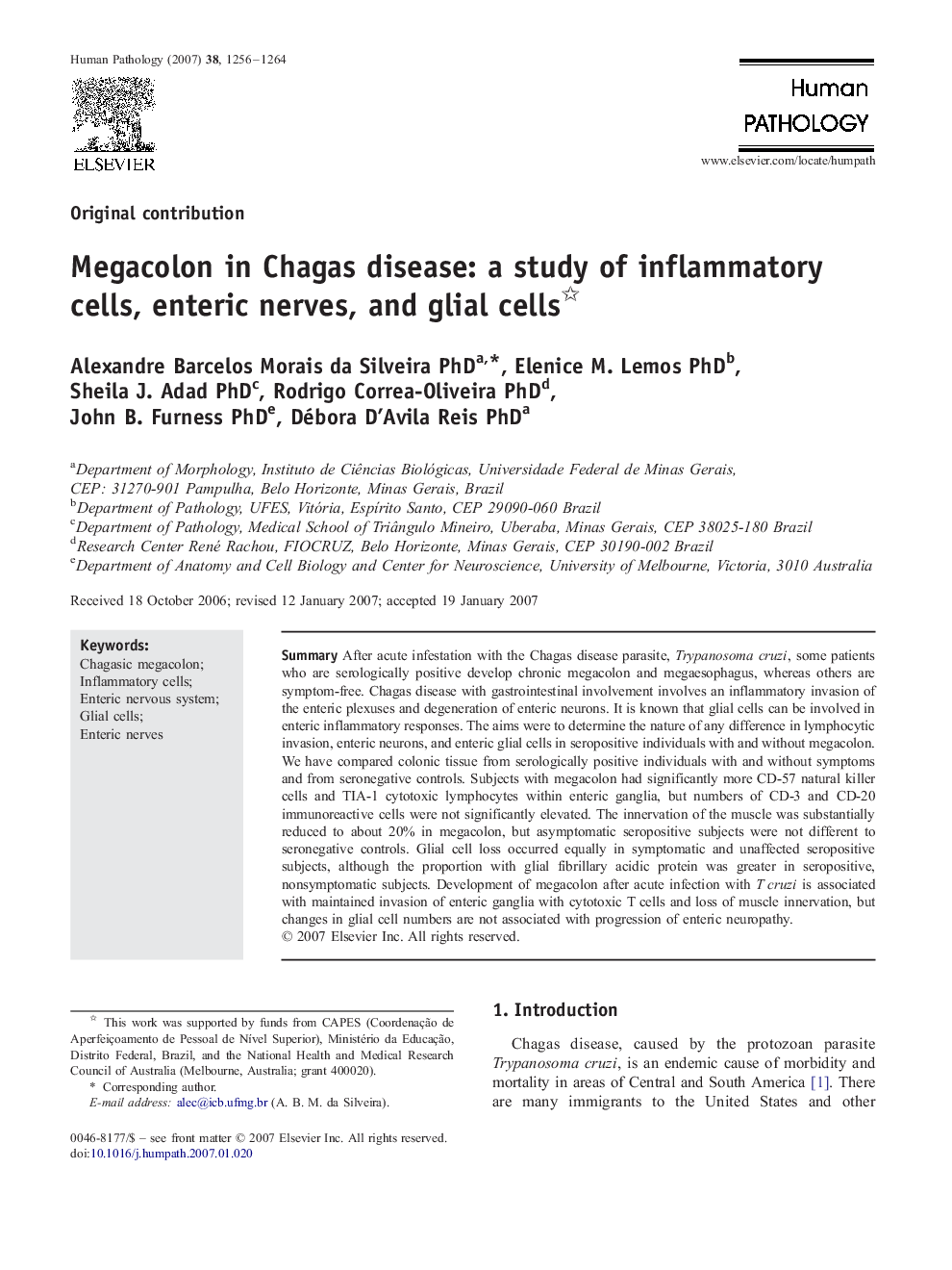| Article ID | Journal | Published Year | Pages | File Type |
|---|---|---|---|---|
| 4135141 | Human Pathology | 2007 | 9 Pages |
SummaryAfter acute infestation with the Chagas disease parasite, Trypanosoma cruzi, some patients who are serologically positive develop chronic megacolon and megaesophagus, whereas others are symptom-free. Chagas disease with gastrointestinal involvement involves an inflammatory invasion of the enteric plexuses and degeneration of enteric neurons. It is known that glial cells can be involved in enteric inflammatory responses. The aims were to determine the nature of any difference in lymphocytic invasion, enteric neurons, and enteric glial cells in seropositive individuals with and without megacolon. We have compared colonic tissue from serologically positive individuals with and without symptoms and from seronegative controls. Subjects with megacolon had significantly more CD-57 natural killer cells and TIA-1 cytotoxic lymphocytes within enteric ganglia, but numbers of CD-3 and CD-20 immunoreactive cells were not significantly elevated. The innervation of the muscle was substantially reduced to about 20% in megacolon, but asymptomatic seropositive subjects were not different to seronegative controls. Glial cell loss occurred equally in symptomatic and unaffected seropositive subjects, although the proportion with glial fibrillary acidic protein was greater in seropositive, nonsymptomatic subjects. Development of megacolon after acute infection with T cruzi is associated with maintained invasion of enteric ganglia with cytotoxic T cells and loss of muscle innervation, but changes in glial cell numbers are not associated with progression of enteric neuropathy.
